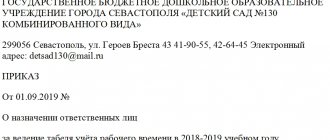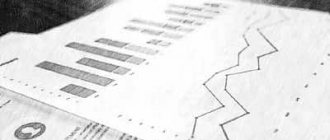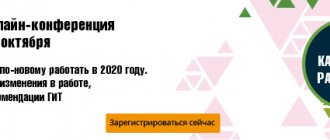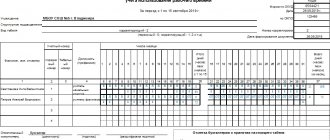During the working day, employees of any commercial enterprise receive tasks that must be completed within a certain period of time. It is not uncommon for a task to not be completed by the deadline. This may be due to various reasons: insufficient experience, heavy workload or outdated technology. In addition, the employee may not engage in the assigned task without permission, but spend working time on personal matters. To establish the true reasons, it is necessary to conduct an investigation. And one of the ways to do it is to photograph a working day.
What is “work time photography”?
Working time photography is a way that helps track the productivity of each employee in an enterprise. That is, its task is to generate data on what a specialist spends his working hours on. This is an effective means of determining how much time is being spent on a given task.
INFORMATION. This is not a photograph of the team in the literal sense of the word, but just a document with a similar name. It received this name due to its ability to record the execution of orders by employees, indicating all the details. That is, a task is set and time is allotted to complete it. Explanations may be included in the document. The versatility of this tool will allow you to track not only production workload, time, but also intellectual resources.
Differences from timing
Timing allows for analysis lasting up to 1 week or month, with the period determined by the employee himself.
As for working day photography, this procedure is a more formal event. The initiator can only be the company's management.
When taking photographs of a working day, all information received is recorded in a document of the established form and is clearly regulated by the relevant documents, confirmed by the signatures of the management team.
During the timekeeping process, the employee independently decides how it should be conducted and where to record the necessary information for analysis.
What goals and objectives does it solve?
Working time photography helps:
- when forming a staff, creating job descriptions and a work plan;
- analyze the required amount of work for an individual specialist;
- accurately establish the structure of working hours;
- promptly see the reasons why working time is not spent on solving problems;
- perform a comparative analysis of the productivity of specialists of similar qualifications;
- promptly identify the reasons for non-fulfillment of the given work plan;
- establish effective methods for increasing employee efficiency;
- assess workplace conditions and their direct impact on productivity;
- analyze the waste of time among production leaders.
The method helps to achieve the following goals:
- identify time that was not used during work during the day. Identify the problems associated with this;
- hold events at which possible solutions to these problems will be announced;
- create temporary standards;
- study the activities and experience of other companies whose productivity is higher;
- organize employee training to increase production capacity.
REFERENCE! Working time photography is a universal and comprehensive approach that solves more than one problem. It helps increase productivity at minimal cost.
https://youtu.be/zj_6gOCG6Uc
What it is?
A working day photograph is a type of observation of the activities of an individual employee: an accountant, a cook, a manager, a secretary, a storekeeper, or a group of workers: engineers, economists, electric welders, in order to determine how much time they spend working.
Such an observation is intended to be transferred to paper and to see with your own eyes the real time spent on the work process. When compiling a map, even telephone conversations that took several minutes are included in it. As a result, the manager sees what his staff is actually doing throughout the working day and week.
Important! Observation periods may vary. They are determined based on the complexity of the situation and the tasks assigned to the observer.
The main goals of compiling a report based on the results of a working day photograph:
- determine the structure of working time. It helps to identify the most time-consuming operation, type of work and determine the employee’s priorities, that is, if he spends more time on one task, then it is more important to him;
- study the experience of specialists who produce the best results. It will be useful for young staff. The experience and characteristics of setting and performing the tasks of the best employees helps to optimally organize the work of the rest;
- set standards. Having analyzed the working hours of several employees, it will be easier to determine the development of standards for the rest. This is especially important for such professions as: master of various machines, canteen workers and other similar professions. This technique helps determine why previously established standards were not met;
- determine losses in the work process. The results will show what the employee did during the day and what percentage of time he spent on performing his job duties;
- employee performance assessment helps assess the level of professionalism of employees and their motivation to work.
Important! There are no restrictions on the applicability of this method; it will help to examine very carefully the working day of both the cleaning lady, the chief accountant, and even the manager.
Who has access to the information from the working time photograph?
It is not confidential, that is, any employee interested in it can take into account all available information. That is, the data is available:
- to the management of the organization and heads of departments to set the level of employee involvement in the work process;
- employees of the personnel department and personnel departments to determine the number of required people on staff and conduct investigations if necessary;
- employees to increase their productivity and optimize their working time.
Who needs this information?
First of all, a photograph of the working day is necessary:
- managers and owners of companies to understand the workload of their staff and the effectiveness of their work;
- HR managers, HR department to create job descriptions, form the necessary staff, carry out research work;
- directly to the employees themselves who are interested in the effectiveness of performing their job duties.
Variety of photographs
There are several types, each of which has its own characteristics.
Individual
Compiled only for one specialist in order to track his effectiveness. His work will be monitored by a commission, which will ultimately enter all the data into an observation sheet.
Group
The employee is monitored by a whole group of observers. The implementation of control itself is similar to the individual method. A commission is organized whose task is to monitor the work process of a certain group of people. This will allow you to analyze each employee, and the work of the group as a whole.
If the work analysis is carried out in relation to three or more people, then it is carried out using the method of instant observations. Employee actions are noted during the process.
- The observer determines the work tasks for analysis, since analyzing the entire labor process is a rather labor-intensive process.
- The analyzed time is divided into intervals.
- Intervals when entered on the form are indicated briefly: by number or letter.
Brigade
This method is usually applicable in production and is no different in structure from group photography.
Disadvantages of the FRD technique
Although a photograph of a working day provides comprehensive data on time spent in the process of work, however, certain disadvantages still exist. Firstly, it is necessary to conduct observation over several days. Fixed results for one day are, to put it mildly, incorrect.
Secondly, involving an individual in observation is also a disadvantage of the method. Of course, you can hire a specialist in this area, but it is far from cheap. If you use the available resources and assign your own employee as an observer, then he will also have to be taken away from his main work. And if self-photography is used, the results may not be the most plausible. It is unlikely that an employee will fill out a report in which he voluntarily indicates how many times he smoked per day or how many hours he spent on the Internet, visiting social networks. networks.
Work time photograph form - download a sample form
Sample photo of taxiway
Methods of carrying out
The composition of the supervisory commission is approved by the head of the organization. This may include:
- chief engineer and ordinary engineers;
- employees of the personnel department and personnel structure;
- representatives from the accounting department;
- employees from the labor protection department.
For an individual analysis, the commission may consist of one person.
Rules
If there are several specialists in an organization doing almost the same work, then the commission has the right to combine information about two employees in one sheet. For example, if there are two such employees, then the first half of the day is allocated for monitoring one, and the second for the other. Ultimately, one photo will be created between two people. For a clearer procedure, observation is carried out several times. The average values are entered on the form.
Taking photographs of a working day - features and nuances
When conducting workplace photography, the employer must take into account that this process does not perfectly reflect the actual situation at the enterprise. First of all, it should be noted that with a short duration of the photograph, employees can specifically adapt to demonstrate better results than practical ones, and accordingly, the assessment carried out will not give the expected results and cannot subsequently be included in the procedure for improving the efficiency of the work organization. Employers and those responsible for working day photography should take this feature into account first.
An important point is the fact that a photograph of a working day in itself can increase the efficiency of an enterprise - this is due to the above-described feature of such a procedure. After all, employees who understand that their every action is controlled often work more efficiently than in the absence of control.
Direct photography of the working day should begin with the actual start of the working day. Therefore, the specialist responsible for its implementation must arrive earlier than the workers being analyzed. A photograph of a working day includes all periods of an employee’s work activity, from preparation for work to the procedures for completing it. However, in some cases it may be appropriate to take photographs only for selected periods of time.
It is necessary to distinguish the method of timing working hours from the method of photographing the working day. In the first case, exclusively cyclical and identical procedures are measured to identify and establish general standards for the production of commercial products or the provision of identical services, and in the second situation, the total expenditure of working time throughout the day is assessed in a complex form.
During the procedure, inspectors must be equipped with the necessary prepared forms and strictly record every action of the employee. However, it should be remembered that during breaks provided for by law and if the employer provides employees with additional breaks within working hours, such periods of time cannot be taken into account as losses of working hours and minutes.
Stages of implementation
Properly organized observation is the key to the most accurate results. It includes preparation, observation and processing of the results obtained.
Preparation
Members of the commission must understand the specifics of the work of a particular specialist, since without this it will be difficult to give a correct assessment of his activities and record this in a document. Observers become familiar with the technical nuances and prepare observation sheets, which include the basic parameters to be studied.
Observation
The commission measures the duration of all processes in the workplace. For example, an employee is given three tasks that are included in the parameters of the observation sheet. Next to them are the start and end dates of execution. All breaks, even unauthorized ones, are taken into account. The entire working day is allocated for observation.
Processing the results obtained
This is the most important stage, which consists of:
- Calculating the total time a specialist spent on work. At the same time, time is allocated to complete assigned tasks and take breaks.
- Evaluation of observation results. An employee’s work in hazardous conditions must be taken into account, since it is impossible to work for a long time in such a situation.
- Comparison of results with established standards.
In the process of processing the results, special attention is paid to “problem areas”. For example, an employee with a leadership position pays more attention to routine matters, while ignoring truly important tasks. This significantly reduces efficiency. In such a situation, the conclusion is drawn that he should delegate routine matters to a mid-level specialist in order to focus on priority tasks.
By analyzing the process, observers highlight the amount of time that was wasted. For example, the observed person had a long, unrelated conversation with his colleagues. In this case, it will be necessary to review the corporate culture and once again convey the rules to employees.
General rules and principles
If the enterprise has several workplaces, the maintenance of which is directly related to the same equipment, the certification commission has every right to create only one card in a selective version.
For example, Ivanov and Sidorov work as mechanics in different shops, but they perform identical work. Thus, the commission has the right to observe Ivanov before lunch, and after the break, to observe Sidorov, and thus form one photograph of the working day for both of them.
To form a more accurate photograph, it is necessary to certify the workplace several times, after which the average indicators are entered into the card form.
It is necessary to understand that payments regarding compensation to an employee due to harmful working conditions depend on this.
Stages and methodology
The procedure for creating a map consists of the following steps:
- preparatory;
- observation;
- processing of results.
Preparation stage
The preparation process consists of familiarizing yourself with the technical process, the workplace, and preparing observation sheets in which the main parameters will be entered to determine the assessment analysis.
Observation phase
At this stage, the duration of all work performed is directly measured, taking into account breaks.
In parallel with this, data on the time and work on which it was spent is entered into the observation sheet tables. These actions are repeated throughout the working day.
Processing the results
The order of processing the results is as follows:
- The total amount of time worked that was spent on production is calculated. In parallel, the time spent on certain tasks, including breaks between them, is calculated separately.
- The study results are being assessed. During the processing, it is necessary to determine the time the employee spent in hazardous working conditions, taking into account the average indicator on this issue.
- The employee’s compliance with the tasks assigned in the technical process is determined, and the time spent on performing any specific operation in which harmful working conditions operate is noted.
How to apply?
For all employees in any field there is a certain type of card form. They indicate the name of the enterprise and its structural unit.
After this, the map indicates:
- once again the name of the enterprise;
- employee's initials;
- level of education and profession;
- position held by the employee;
- the name of the work performed, each separately.
After this, a brief description of the work performed by the employee is formed.
As for the tabular part of the document, it indicates information for each stage of work with its obligatory name and the corresponding code (if any).
The following columns in the document are required to indicate the start and completion dates of the certification, including the total time it took place.
The “Note” column indicates various additional information that was obtained during the certification process.
Below the table, a summary of the photograph of working hours is formed, where it is necessary to indicate:
- preparatory and final time;
- time spent on servicing working hours;
- time spent on promptly solving assigned tasks;
- break time between work.
After entering the information, the document is submitted for signature to the head of the structural unit where the observation was carried out, and then signed by higher management.
It is imperative to indicate their position.
You can learn about forms and systems of remuneration from our article. What are the working hours of women in rural areas? See here.
Why is outstaffing needed? Information is here.
Photo map (sample)
The document form can be downloaded here:
Working time photo card (form)
Observation sheet
The observation sheet for forming a photograph of working time has the following form:
Observation sheet (form and sample filling)
Example
Example of a photograph of an accountant's working hours
https://youtu.be/igWR_XnyQnA
How are the results of the work of the supervisory commission formalized?
All information must be displayed on a special form. It must contain the following information:
- Title of the document;
- name of the organization or structural unit;
- initials of the specialist being monitored, his position, education and level of training;
- name of the work performed;
- list of assigned tasks.
The question often arises: what to include in the note? After the column with the brief name of the task at hand, for example, working with incoming information, you can note in a note that the employee worked with e-mail and prepared responses to letters. You can also enter any other information that seemed important during the observation process. If the name of the work has a code designation, then this can also be entered into the sheet.
The following information is indicated below the table:
- time spent preparing for work and completing it;
- the time that the employee spent servicing the workplace, for example, turning on the computer or cleaning the desktop;
- time spent on operational problem solving;
- time for breaks.
That is, the form describes the entire sequence of actions of the specialist, even the few minutes he spent turning on the computer.
After the observation sheet has been fully prepared, it is submitted for signature to the head of the structural unit whose employee was under observation. And then it is submitted to the head of the organization for signature.
Determination of the severity of labor
Analyzing the above, we can once again note that photography is a complex tool. With its help, not only the work activities of the organization’s specialists are assessed, but also their working conditions.
The level of performance depends not only on the efforts of the employee, but also on the arrangement of his workplace, and the proper functioning of the equipment provided. Identification of problems in this part as a result of observation allows them to be quickly resolved.
In addition, the severity of labor is also analyzed. To do this, a labor protection specialist must be present on the commission, since he has the necessary knowledge for a correct assessment. The time that the employee spent, for example, turning on work equipment is analyzed. Outdated technology greatly slows down the work process.
REFERENCE! The analysis can be carried out not only by the commission, but also by the manager. Based on the data received and by virtue of his powers, he can make larger decisions.
Types and stages of implementation
There are several types of FRFs. This can be an individual examination for each individual employee, as well as mass and team photography.
Some workers use the self-photography method, that is, they use a method of self-certification. But this must be agreed upon with management, otherwise such a document will have no meaning.
Individual research is one of the most common FRF methods. This work is carried out to determine the effectiveness of a particular employee. At the same time, the labor commission carefully observes how the specialist works during one working day.
All data is entered into a special form called an observation sheet. Next, this paper is transferred to the manager, who can draw certain conclusions regarding a particular employee.
Mass photography is performed when you need to evaluate an entire department or group of employees. The stages of work in this case will not differ from the previous version. But as a result of general certification, you can see the effectiveness of not only the group, but also individual employees.
It is not uncommon for the person conducting the study to divide work time into periods, in each of which a specific worker is observed. This makes it possible not to create a large certification commission. The data is entered into one general sheet, however, with certain notes in the form of letters.
A team study is no different from a group study. Similar steps are used here, but only the number of people may be greater than in the previous case.
Any type of photography of working hours, other than self-photography, should only be carried out by management personnel. For this purpose, a certification commission is determined, which may consist of engineers, personnel managers, accounting employees or labor protection specialists.
Most often, when it comes to individual photography, an employee of the HR department is appointed as the person in charge.
The workday photograph map does not always show a clear picture, since quieter periods may be observed on certain days of the week or month. Therefore, it is advisable to carry out certification several times. And enter the average indicators into the final form.
Each specialist who is appointed to conduct certification must first carry out high-quality preparatory work. This will allow you to find out the characteristics of the employee’s work, the specifics of his workplace and other important parameters that influence not the final assessment.
Next, you can begin to evaluate the employee’s work. When creating an individual photograph, the employee is monitored throughout the entire working period, including breaks.
Actions after analysis
Based on the analysis, the General Director can:
- Reduce or increase wages. For example, when using a group method, it turned out that one had higher performance indicators, while the other was repeatedly distracted. The first one deserves a monetary incentive, while the second one will have their income reduced. This system allows you to further motivate staff.
- Increase the number of employees. Upon analysis, it turns out that the efforts of specialists are not enough to solve the assigned tasks in a timely manner. The result of identifying such a problem may be the recruitment of additional personnel.
- Change responsibilities. Time may be spent irrationally due to inadequacy of one's position. For example, the employee has little experience. In this case, he can be removed from his position, but the best solution would be to conduct additional training.
- Correctly distribute the load. One department may have a lot of work while another has little work. As a result, tasks are evenly distributed.
Working time photography methods help to update equipment and improve the comfort of the workplace. On the one hand, this is not a complicated method, which only takes one day, but the result is a large-scale analysis of the state of the entire production, identifying and eliminating “weak” areas.
Kinds
There are several types of workday photography, namely:
- individual;
- group (mass);
- brigade.
Let's look at each type in more detail.
Individual
This type of certification is carried out directly for one employee in order to determine his effectiveness in using the labor process.
The commission observes the employee throughout the working day and enters the relevant information into the observation sheet.
Group (mass)
This type of workday photography is performed with the aim of simultaneously observing a certain group of employees.
The observation procedure itself is completely identical to the creation of an individual employee card. Based on the results of the analysis, you can get a picture of the efficiency of labor costs of each employee in the unit separately.
In the event that a photograph is necessary for a group of people consisting of more than 3 employees, the analysis is carried out using instant observations with mandatory recording of the condition of employees and equipment after a certain period of time.
The key features of employee group photography are:
- the observer selects certain types of costs in advance, since he is not able to record the working day continuously for each workplace;
- the time allotted for observation is divided into intervals, the accuracy of which directly depends on the volume of these intervals;
- When entering costs into an observation sheet, they are reduced into an easy-to-remember form (in the form of numbers or letters).
Brigade
The team calculation of working time photography is completely identical for the group variety and is no different.
What is a gray salary? Find out from our article. How to apply for a salary reduction? See here.








